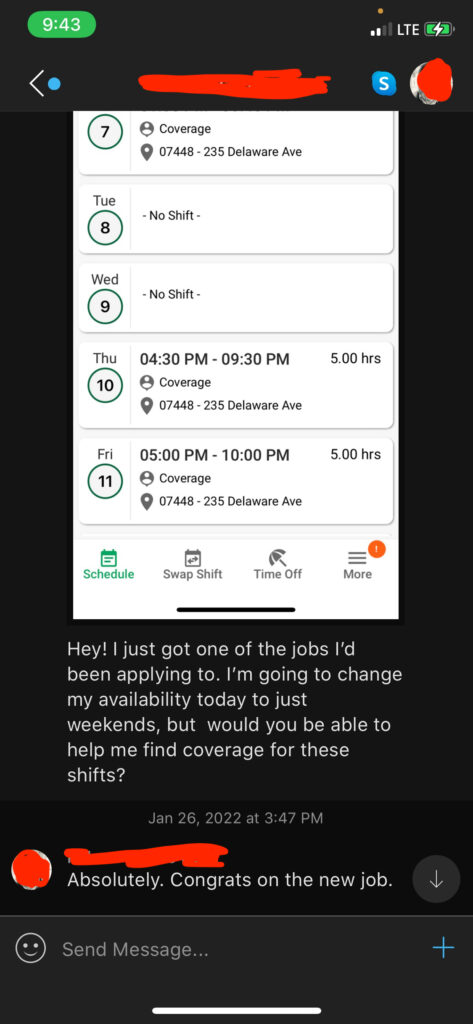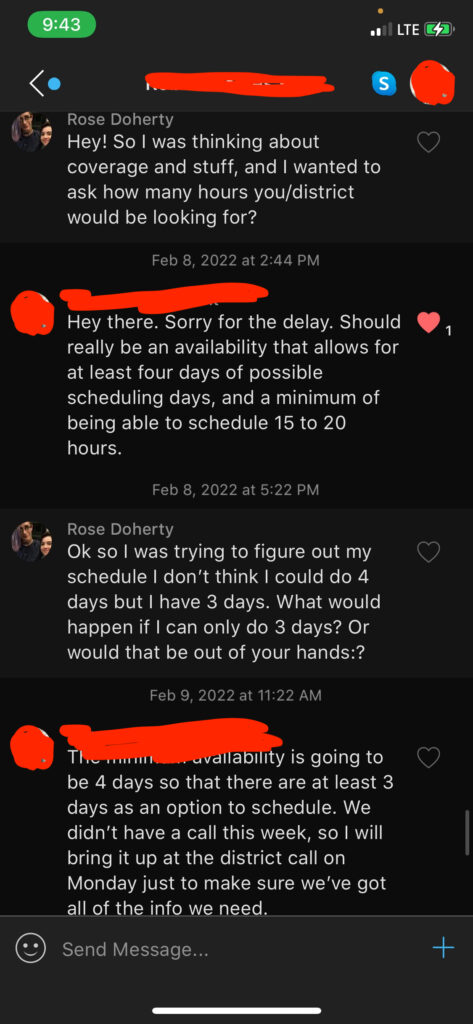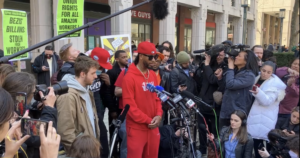By Jordan Zakarin
Multiple leaders of the Starbucks union drive in Buffalo, New York, have been warned that they may be fired in the coming weeks as a result of policy shifts planned by Starbucks management after the first successful unionization effort at one of the company’s U.S. stores.
The new rules appear to target several of the Starbucks workers who led the organizing drive at Buffalo’s Elmwood location, Starbucks’ first unionized store, and who now sit on the union’s bargaining committee, as well as workers who are leading the union push at other stores in the area.
Managers told workers in several Buffalo stores including Elmwood that any employee working less than 20 hours per week could be terminated, multiple sources tell More Perfect Union.
A majority of the union leaders in the Elmwood store work fewer than 20 hours per week, the threshold for full-time benefits at the company. The part-time schedule is typical for many Starbucks employees, who frequently balance the work with other jobs, school, and family commitments. These workers include Jaz Brisack, Cassie Fleischer, and Kellen Montanye, who have been prominent faces of the union movement and sit on the bargaining committee. It would also impact leaders of the organizing committee at the Delaware and Chippewa store in Buffalo, which recently announced its intention to unionize.
A representative for Starbucks denied that there is a new 20-hour rule and said that managers were “having conversations with partners about their availability” in light of an increase in workers asking to reduce their hours. The managers, Starbucks said, are asking workers to expand their availability in order to keep the business running.
Starbucks is under pressure to negotiate with the newly-unionized employees, as is required by labor law. The company has thus far only had one sit-down conversation with the workers. Firing some of them could be part of an effort to stall the negotiations and prevent workers for achieving a first contract.
Workers noted that the number of staff at their locations was supersized during the union campaign and more hours were made available during the holiday season, when stores are at their busiest and most profitable. Starbucks also gave stores extra hours to distribute to new workers during the fall, one worker told More Perfect Union, but stripped them away some time after the Elmwood store voted to unionize in early December.
They estimate that they’d have 10-14 workers on the floor during a shift that would normally have 5-8 on duty.
“There were shifts where one person’s job was literally to pour brewed coffee or wipe down tables because we were so overstaffed,” one worker tells More Perfect Union.
Róisín Doherty, the lead organizer at the Delaware and Chippewa location in Buffalo, had her hours cut when Starbucks flooded stores with those new workers. On January 26th, she told her manager that she’d taken a second job due to this loss of hours and would have to adjust her availability. The manager congratulated her and said it wouldn’t be a problem; another worker at the store already worked the same schedule.
The workers at Delaware and Chippewa announced their intention to unionize on January 31st, and on February 5th, her manager changed their tune about her request.
Now, management said, the store would be requiring at least 20 hours and four days of availability per week; Róisín could only offer three based on her new job. Her new availability hadn’t struck her as a potential problem; at the time, she said, there were 30 workers in her store that had to split about 400 hours per week between them, which worked out to just over 13 hours per week for each person.


Cassie Fleischer has worked at Starbucks for nearly five years, and at the Elmwood location since July of 2020. She typically worked between 37 and 39 hours per week until the holiday season, when, despite it being the busiest time of year, management cut her hours to between 29 and 31 per week. The loss of pay forced her to search for a second job, and in early February, she informed her manager that she’d obtained one. She asked to reduce her hours to 15 per week, while offering to provide extra availability when necessary.
On February 8th, her manager informed Fleischer that her request was being denied because it “didn’t meet the needs of business” and that she would have to either consider taking a leave of absence or “pursuing termination.”
Fleischer told her manager that she could make herself available on Saturdays, which would take her to 20 hours worked in a week. She hasn’t received a response from the manager, but has been taken off the Starbucks schedule for the next two weeks. She’s been told that if she doesn’t work a shift for three straight weeks, she will face termination.
Another Elmwood worker, Kellen Montanye, has been with Starbucks for three and a half years. A grad student, he has always adjusted his hours based on his school schedule, which is more restrictive during the semester, but makes him available to work opening and closing shifts. That was never a problem, including this fall, when he worked one day a week and picked up shifts when necessary. He went full-time during the holidays, then saw his hours cut to 1-2 days a week by the company.
When he submitted his schedule request for this semester, it was in effect a request to continue the hours he’d been given after the holidays. So he was surprised when Starbucks management denied his proposed hours for the first time, and even more shocked when he was told that Starbucks would need him to work 20 hours and have three to four days of availability for him to continue working at all.
Otherwise, management told Montanye, he’d be asked to take a leave of absence. Taking leave would preclude him from picking up any shifts at Elmwood or any other store, and would only cover 30 days, while this semester, his last with regular classes, lasts until May.
Former Starbucks store managers tell More Perfect Union that there has been no uniform minimum hours-worked policy across the company. Instead, telling workers or applicants that their availability “does not fit the needs of the business,” as Starbucks is telling workers in Buffalo, has been used at the discretion of managers, often to force them to quit or not apply at all.
Workers at the Elmwood location walked out and protested for several days in January over lack of safety precautions during the height of the Omicron variant, which tore through the store’s staff. A second Starbucks in Buffalo also voted to unionize, while votes are expected to be counted at three other locations in the city next week.
The leaders there have become the face of a union movement that has spread to 100 stores in 26 states as of Friday.
Last week, Starbucks fired seven workers in its unionizing Memphis location, wiping out the entire organizing committee. The company is flooding unionizing stores nationwide with new employees, hoping to water down pro-union votes in upcoming NLRB elections. The new workers have also been used to cut down the hours given to existing employees, which is seen as an attempt to force them to quit.



